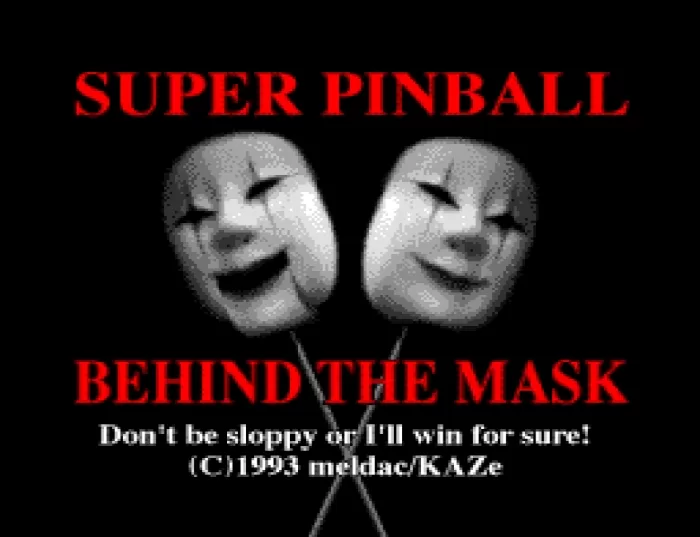
Super Pinball Behind The Mask isn’t a bad digital pinball game — but it’s certainly a bland digital pinball game.
In Retro Game Of The Week I pull a game from my collection and write about why it’s important or interesting. Or in some cases, badly dated and rubbish.
I’ve been on a bit of a pinball kick this week, largely due to reviewing the Universal Pinball TV Classics pack, so I figured I might dive into the collection and pull out a retro pinball title as this week’s pick.
Super Pinball: Behind The Mask certainly fits the bill — I mean, it’s got “Pinball” right there in the title, right?
On the surface, it would appear to offer a bit more than many other 16-bit or 8-bit pinball games, because it’s not just offering you the one pinball table, but instead three of them; Jolly Joker, Blackbeard And Ironmen (not Iron Men, but all one word, Ironmen) and Wizard.

Despite the presence of IronMen,
to the best of my knowledge Blackbeard never even competed at Coolangatta.
Super Pinball: Behind The Mask does have one odd menu feature I don’t think I’ve seen on any other SNES game, though, and while it’s dumb, I feel like I have to mention it. You can choose between a 1-4 player score based competition — all quite standard stuff and the basis for any good pinball time with your mates, or Conquest mode, which is a score attack challenge to shift from one table to another… or “Exit”.
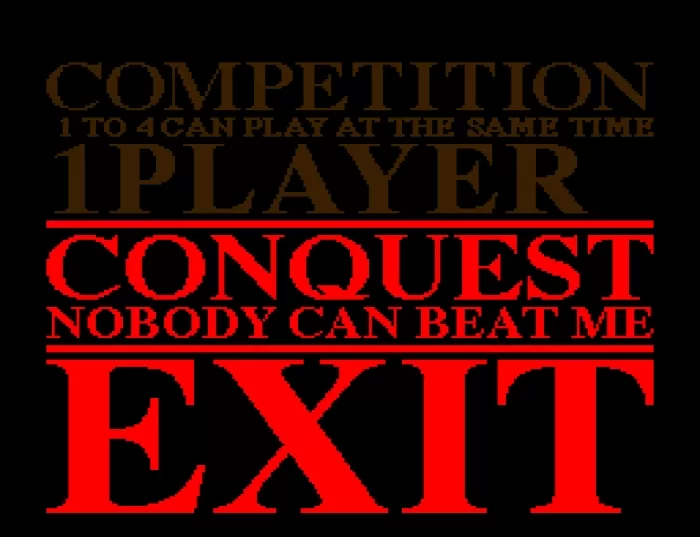
Exit is also in the biggest, boldest type… but all it does is take you back to the start screen, where you can then go back to this exact selection screen.
Why is it there? What real function does it serve?
At a guess – and it’s just a guess – Super Pinball: Behind The Mask was developed with Windows (or some other Japanese PC format) in mind, and that’s an exit-to-desktop style option in the original code… but of course there’s no desktop for the SNES to drop to.
Onto the tables then, and Super Pinball: Behind The Mask’s big point of difference here is that it emulates an old school DMD display, but not up in the corner or top of the screen as many similar digital tables do.
No, instead if it has to tell you about a score you just got or a challenge you just completed, it does so RIGHT IN THE MIDDLE OF THE PLAYFIELD.
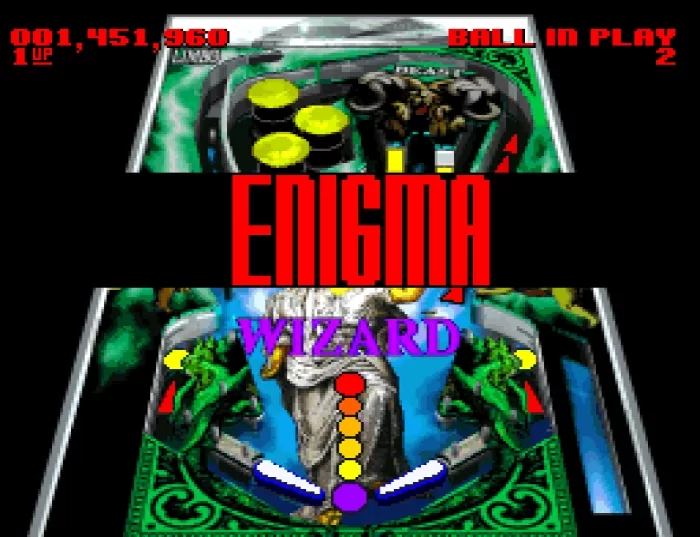
Why did they make that design choice? Truly, it is an…
Certainly, this isn’t something you can do with real-world pinball, but there’s a good reason for that, because it really does break the flow of play pretty badly, because the ball movement is frozen when that comes on screen.

You got some POINTS! Who really needs to know where the ball is anyway?
Admittedly, you wouldn’t want the ball still in play if you can’t see the playfield, but still, it’s a weird bit of coding.
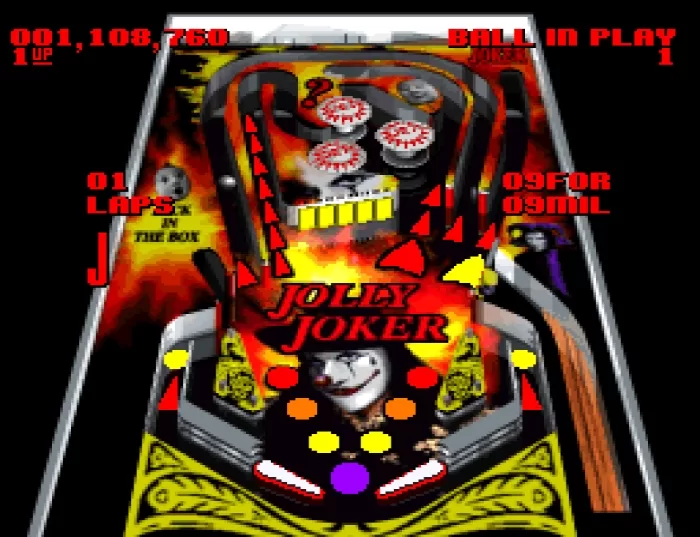
Mr Jolly Lives Next Door… and he’s got a pinball table, it seems.
While Super Pinball: Behind The Mask promises three tables, it’s more-or-less just three themes with some very light rearranging of visual elements between them.
All three tables have more of a 70s EM feel to them in terms of the features they have, with scoring from very simple loops, targets and bumpers.
Nothing wrong with simple 70s EM machines, but by the time Super Pinball: Behind The Mask came out, we were already into an era of considerably more complex, challenging and interesting machine designs.
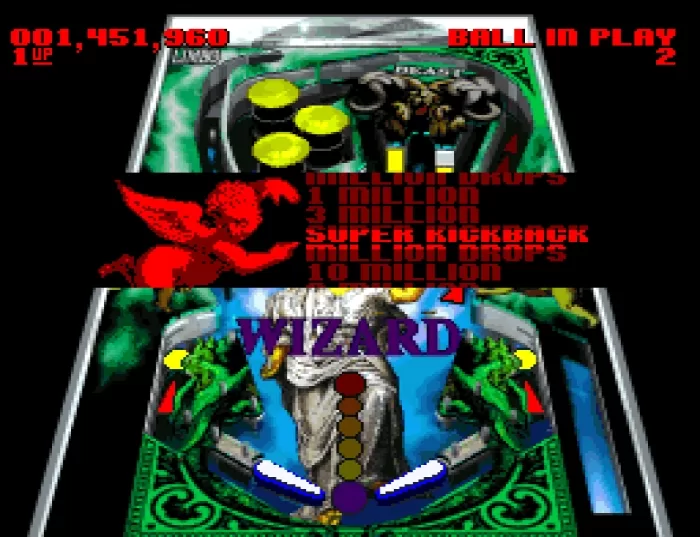
Some of those design ideas, like spinning random bonuses are present… but again, in the middle of the screen where you probably don’t want them.
Table layouts are fine, and the essential ball physics are OK for the era they come from, though still well below the pinnacle of the era — which I still maintain as being the sublime Dragon’s Fury/Devil’s Crush.
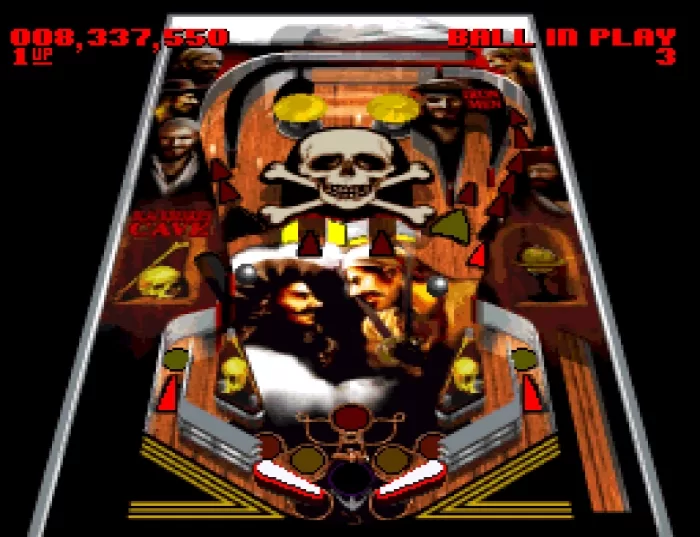
This layout is… fine, I guess. Not terribly inspired, but it’s not outright bad either.
Ball physics are pretty reasonable in the main here, feeling very similar to what was being done with games like Pinball Dreams and the like at the time… with one notable exception.

Multi Ball modes should be a frenzy of excitement. Except not here…
That’s when you engage multi ball mode, because the poor old SNES cannot cope with more than one ball moving in this game. Slowdown was a common factor for many SNES games, it’s true, but the one thing you want in a pinball game is some kind of consistent frame rate. As soon as multi ball starts, you can kiss that goodbye, as the frame rate drops and the game slows…
to…
an…
absolute…
CRAWL.
It really is that bad. Multi Ball does take a little work to engage, so you’re not going to be playing on a pinball table that feels like it’s been dipped in warm treacle all that much… but you’ll regret it when you do.
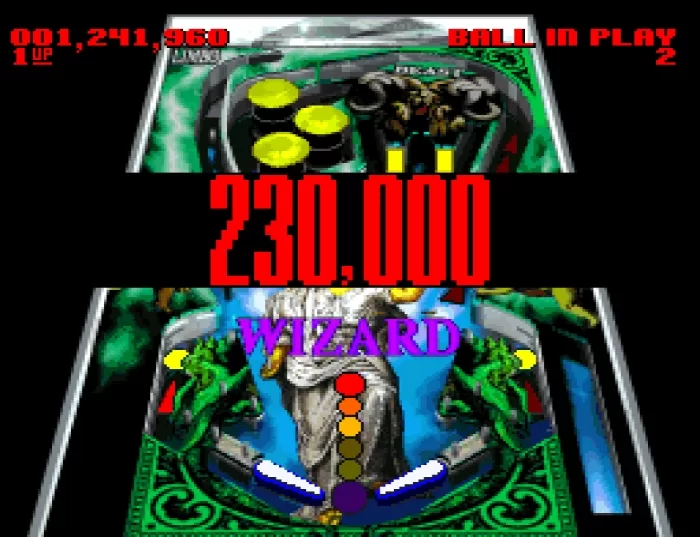
Is it actually Wizard? It is not.
Ultimately, while Super Pinball: Behind the Mask isn’t the worst digital pinball game I’ve played, it is at best mediocre — and it was mediocre when it was brand new, with the intervening years not being all that kind to it. Unless you’ve got a really strong nostalgic memory of this one, it’s probably best avoided.
How to play Super Pinball: Behind The Mask today

That’s my boxed copy above, and one of the very rare instances where Japanese box art is actually worse than US/European box art.
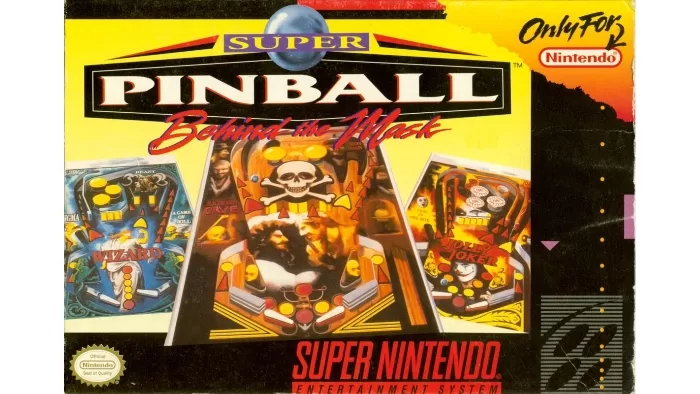
OK, that’s not great — maybe pick just the one font rather than three, designers — but it’s better than the blandness of the Japanese box art.
I kind of expected this one to lie in the cheap carts section of the retro aisles of the Internet, because I only paid something like 250 yen for my boxed copy of it (~$2.50 AUD or thereabouts).
Surprisingly, no, with copies typically selling for around $50 or thereabouts through eBay and that’s sold price, not what people are asking price, too.
Is there someone trying to sell a ridiculously overpriced “graded” copy? Of course there is, if you’ve got more than $400 to waste.
Was this review useful to you? Support independent media by dropping a dollar or two in the tip jar below!





